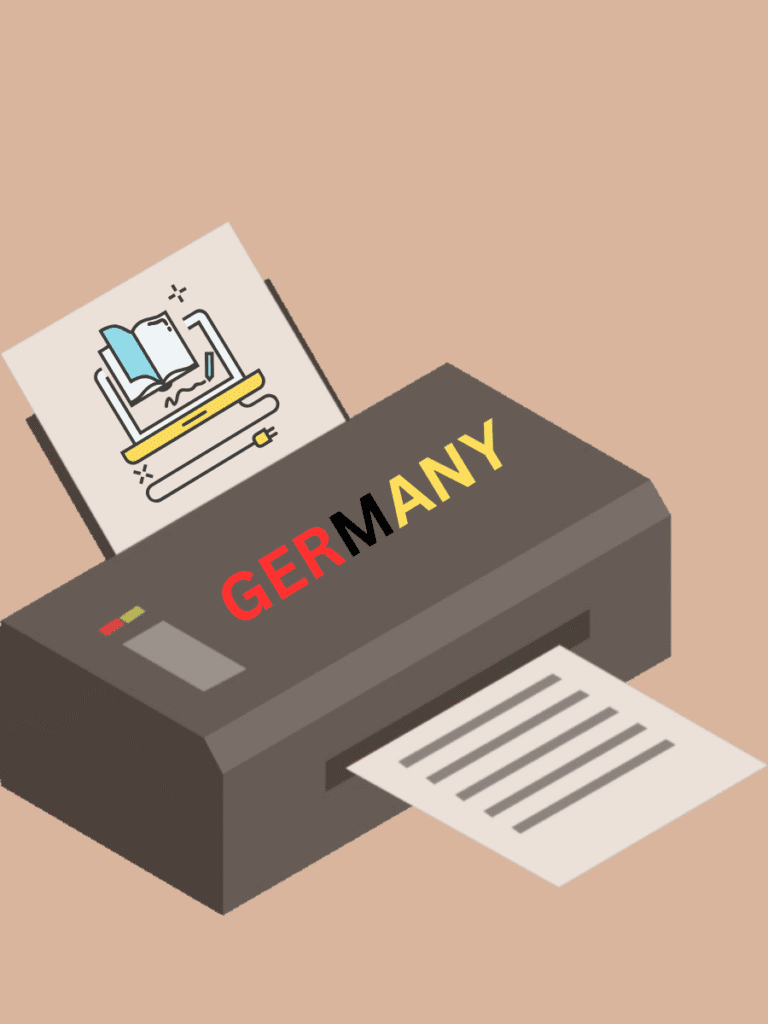Introduction
The German IP evolution reflects a strong tradition of creativity and innovation, evolving alongside technological progress, economic growth, political shifts, and global digitization. Germany’s IP laws have grown from fragmented state rules into a structured legal framework that supports inventors and businesses alike.
According to the German Patent and Trade Mark Office (DPMA), Germany received 38,469 patent applications in 2023, marking a 3.4% increase. In 2024, trademark applications rose by 2.1% to reach 80,365. These figures highlight Germany’s rich inventive culture and its robust intellectual property system. This legal landscape didn’t emerge overnight but developed through significant milestones that contributed to Germany’s key role in the European IP framework. Let’s explore the major moments shaping the German IP evolution.
Early Developments (Before 1871)
The journey of the IP framework of Germany began with the invention of the “printing press” by Johannes Gutenberg of Mainz in the 14th century. In 1871, before the unification, all the German territories like Prussia, Bavaria, Saxony etc. used to be autonomous states with their own legal frameworks. One of the instances include Prussia’s basic patent law in 1815. IP rights were initially only granted as exclusive royal privileges and not as rightful legal entitlements. Moreover, the limited protection and inconsistent laws across territories posed major legal and economic obstacles for the inventors and creators, especially after the beginning of industrial revolution in Europe.
Unification and the Birth of modern IP law (1871–1918)
The federal-level IP legislation was introduced with the unification of Germany in 1871 under the leadership of Prussia.The Imperial Patent Law, or ‘Reichspatentgesetz’ of 1877, established a centralized patent system with criteria like novelty and inventive step. This made Germany one of the first countries to create a large, structured patent office now the German Patent and Trademark Office (DPMA). In 1894, the Act on the Protection of Trade Marks extended protection to combined word and figurative marks, such as the name “Nike” with its swoosh symbol. The 1901 Copyright Act (Urheberrechtsgesetz) protected literary and artistic works, emphasizing authors’ moral rights. Together, these laws positioned Germany at the forefront of IP protection in the early 20th century.
In between Wars and Reconstruction (1919-1990)
The Weimar Republic (1919–1933) preserved the imperial IP framework, while on the other hand, the Nazi regime (1933–1945) weaponized it for its own propaganda. The Nazi exerted strict control over industrial property and stifled innovations & creative outputs. Jewish writers and inventors experienced racial discrimination, depriving them of legitimacy and legal rights, which eroded the very foundation of IP law. Even so, the underlying legal frameworks endured, making it possible to rehabilitate after the war.
After the second world-war in 1945, West Germany started rebuilding its IP laws under more democratic and internationalist principles, ratifying the Paris Convention, Berne Convention, and Madrid Convention to align with the international standards of IP protection. The Federal Republic committed itself to protecting IP as both an economic and cultural right. The major amendments in the German IP landscape include the Patent Act of 1968, Trademark Act of 1968, and the re-establishment of DPMA in 1998.
In 1990, the reunification of Germany was simultaneous with the integration of Germany into the European Union (EU). Ever since, Germany has become one of the essential contributors to the IP landscape of the European Union. Moreover, Germany has played a significant role in the establishment of the European Patent Convention in 1973 and European Patent Office (EPO) in 1977. Germany also modified its IP laws according to the EU framework and adopted the EU trademark and Community Design Regulation.
Current era of the German IP Evolution (2010 – Present)
The current IP laws of Germany are known to be one of the most wide-ranging and extensive in the world which includes the following statutes:
- Patentgesetz (Patent Act): The Patent Act of Germany provides protection for inventions, provided that they are novel, have an inventive step, and are capable of industrial application. In 2023, Germany became part of the Unified Patent Court (UPC), which enables it to streamline cross-border patent enforcements within the EU.
- Gebrauchsmustergesetz (Utility Model Act): The Act, independent from the Patent Act, provides quicker, low-cost protection for technical inventions without a substantive examination. It is quite significant among SMEs and individual inventors.
- Markengesetz (Trade Mark Act): It protects both registered and well-known unregistered marks and is also aligned with EU Trademark Regulation.
- Designgesetz (Design Act): It provides protection for the designs that mainly comprises the appearance of a product.
- Urheberrechtsgesetz (Copyright Act): This Act discusses the moral rights, fair remuneration, restrictions on contractual waivers, etc. It also protects the rights of the authors of literary and artistic works among others.
- Trade Secrets Act (GeschGehG): In 2019, it was enacted to implement the trade secret directives of the European Union. The Act provides civil remedies against unlawful acquisition, use, or disclosure of confidential business information.
In the current scenario, Germany, like many other nations, is also facing obstacles because of the complexities regarding AI-generated content on the digital platforms, and the redefinition of “authorship” and “ownership”. However, it has already started adapting strategies and implementing regulations to deal with these challenges. This includes the Copyright Reforms (2017 & 2021) – EU’s Digital Single Market (DSM) Directive and Trademark Modernization Act, 2020.
Conclusion
The history of IP law in Germany is a testament of adaptation, leadership, and legal creativity. From disparate beginnings to legislated harmony, machine tools to machine learning, German IP history is one of not just its own changing character but also of the shifting role of IP in society. As we venture further into the digital era, Germany’s IP legislation will continue to shape European harmonization and international IP policies. And if past performance is any indicator, it will do so with accuracy, balance, and vision-oriented clarity.
References
- Annual Statistics 2023: Number of Patent Applications at the German Patent and Trademark Office increased. Retrieved from: https://globalregulatoryinsights.com/art/annual-statistics-2023-number-of-patent-applications-at-the-german-patent-and-trademark-office-increased/
- Baianat Intellectual Property. Intellectual Property Law in Germany. Retrieved from:https://baianat-ip.com.sa/intellectual-property-law-in-germany/
- Wurmnest, W. (2023). IP Law in Germany: Past, Present, and Future. SSRN.
Retrieved from: https://ssrn.com/abstract=4599740 - Morris L. (2022). A Guide to Intellectual Property Law in Germany. iPleaders. Retrieved from: https://blog.ipleaders.in/guide-intellectual-property-law-germany/#:~:text=In%20this%20article%2C%20we%20will%20focus%20on%20four,a%20leader%20in%20the%20field%20of%20intellectual%20property.
- German Patent and Trade Mark Office (DPMA). About Us. Retrieved from: https://www.dpma.de/dpma/wir_ueber_uns/geschichte/index.html
- European Union Intellectual Property Office (EUIPO). (2020). Implementation of the Trademark Modernisation Directive. Retrieved from: https://euipo.europa.eu







